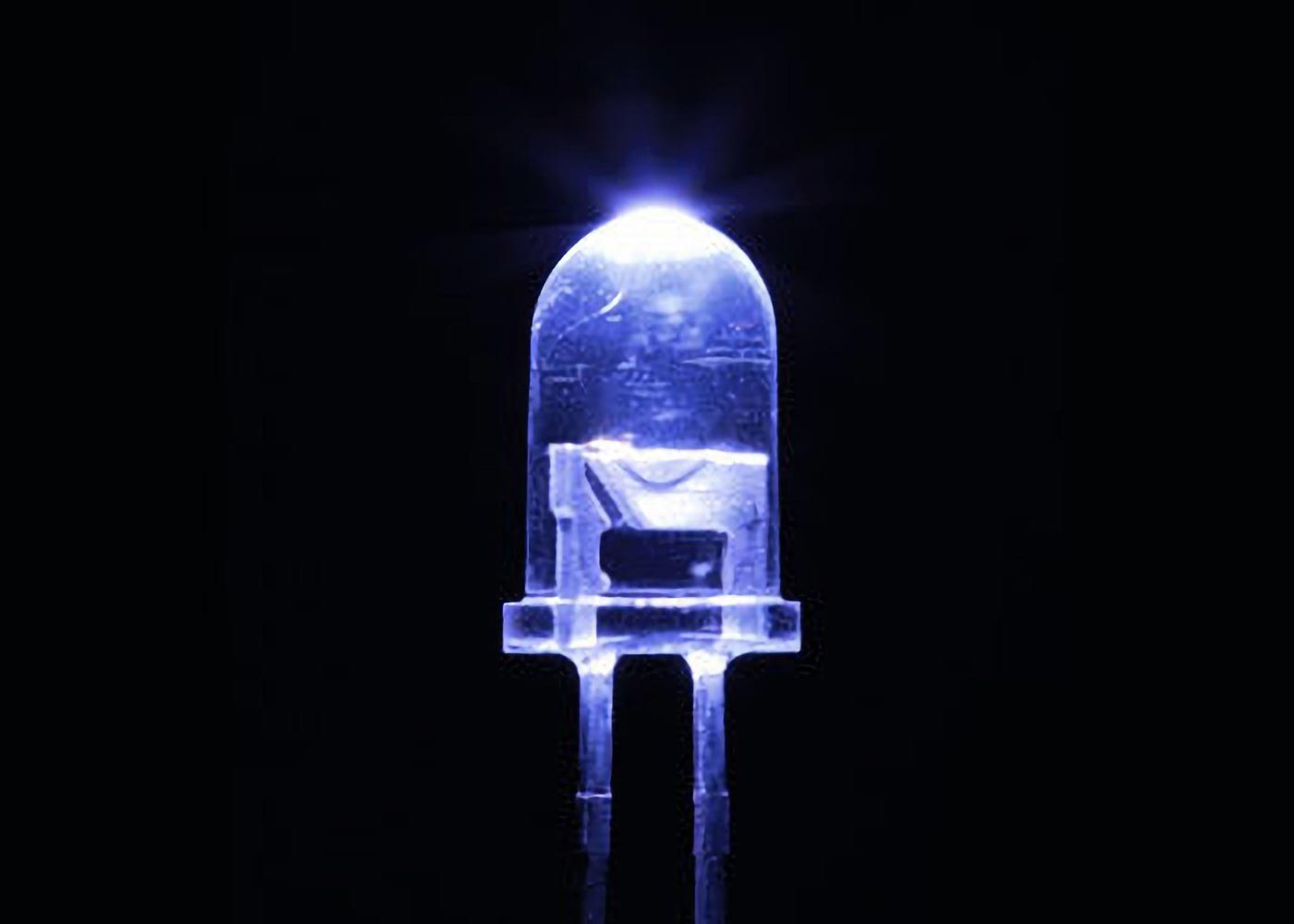
Εικόνα 1: Τα περισσότερα LED εκπέμπουν ορατό φως, αλλά οι φυσικοί της RIKEN έχουν δημιουργήσει ένα LED που εκπέμπει σε μια στενή περιοχή σε μακρινές υπεριώδεις ακτίνες και είναι ασφαλές για τον άνθρωπο, αλλά θανατηφόρο για ιούς και βακτήρια. πίστωση: RIKEN
Ένας ισχυρός λαμπτήρας LED μπορεί να απολυμαίνει αποτελεσματικά τις επιφάνειες, ενώ παράλληλα προστατεύει τους ανθρώπους.
Οι φυσικοί της RIKEN έχουν σχεδιάσει μια λάμπα LED υψηλής απόδοσης που είναι αντιμικροβιακή και αντιική αλλά ασφαλής για τον άνθρωπο. Μια μέρα, θα μπορούσε να βοηθήσει τις χώρες να βγουν από τις σκιές των επιδημιών σκοτώνοντας παθογόνους οργανισμούς σε δωμάτια γεμάτα ανθρώπους.
Οι μικροβιοκτόνοι λαμπτήρες υπεριώδους είναι εξαιρετικά αποτελεσματικοί στη θανάτωση βακτηρίων και ιών. Στην πραγματικότητα, χρησιμοποιούνται συνήθως στα νοσοκομεία για την αποστείρωση ιατρικών επιφανειών και οργάνων.

Ο Masafumi Jo και δύο συνεργάτες του έχουν σχεδιάσει μια λάμπα LED που βοηθά στην προστασία της κοινωνίας από επιδημίες. πίστωση: RIKEN
Οι λαμπτήρες αυτού του τύπου μπορούν να δημιουργηθούν με χρήση LED, γεγονός που τους καθιστά ενεργειακά αποδοτικούς. Ωστόσο, αυτά τα φώτα LED παράγουν υπεριώδες φως σε ένα εύρος που είναι επιβλαβές[{” attribute=””>DNA and therefore cannot be used around people. The search is on to develop efficient LEDs that shine light within a narrow band of far-ultraviolet light that appears to be both good at disinfecting while remaining safe for people.
Germicidal LED lamps that operate in the absence of humans are often made from aluminum, gallium, and nitrogen. By increasing the amount of aluminum they contain, these LEDs can be modified to work in a wavelength region that is safe for humans. This approach has been used before but has resulted in dramatically reduced power.
To work through this issue, three physicists at RIKEN Quantum Optodevice Laboratory, Masafumi Jo, Yuri Itokazu, and Hideki Hirayama, created an LED with a more complex design. They sandwiched together multiple layers, each containing slightly different proportions of aluminum. In addition, in some layers they also added tiny amounts of silicon or magnesium.
This effectively created an obstacle course for electrons, hindering their movement across the material and trapping them for longer in certain areas. This resulted in an increased amount of light emitted by the device and a reduced amount absorbed by it.
The team used computer simulations to model all possible effects to help pin down the ideal design. “We then grew samples to see if it was effective or not,” Jo says. Precisely controlling the thickness of each layer was the biggest experimental challenge. They ended up with an LED operating in the far ultraviolet, with an output power almost ten times higher than their previous best.
The COVID-19 pandemic brought a new consciousness of the importance of being able to eradicate viruses and microbes on surfaces. “We trust that our findings and technologies will be very useful for safeguarding society against this and future pandemics,” says Jo.
Jo adds that the trio will strive to improve their LED’s performance even further. “There’s still much room for improvement in the output power and the power efficiency,” he notes.
Reference: “Milliwatt-power far-UVC AlGaN LEDs on sapphire substrates” by Masafumi Jo, Yuri Itokazu and Hideki Hirayama, 25 May 2022, Applied Physics Letters.
DOI: 10.1063/5.0088454

“Ερασιτέχνης διοργανωτής. Εξαιρετικά ταπεινός web maven. Ειδικός κοινωνικών μέσων Wannabe. Δημιουργός. Thinker.”


